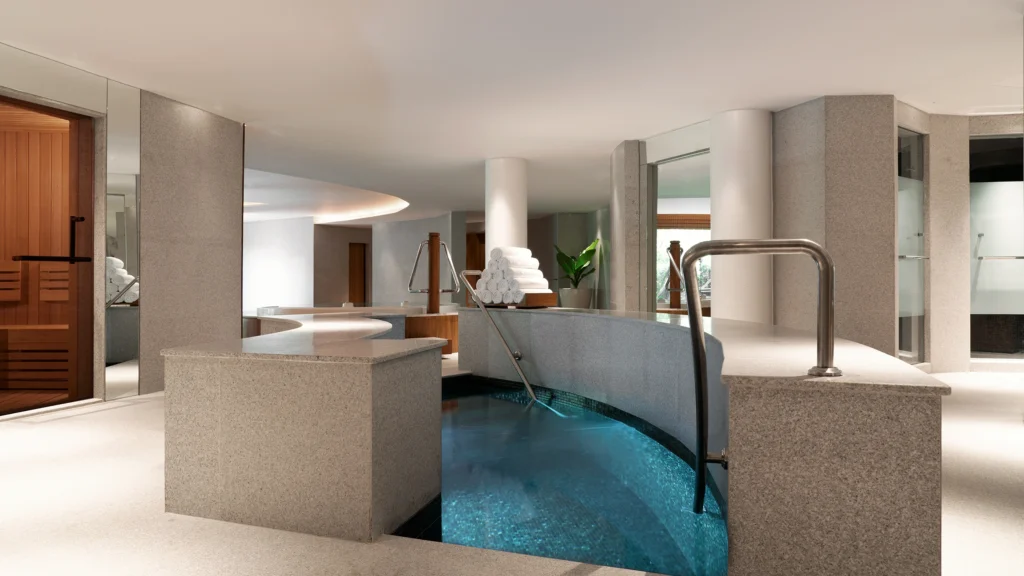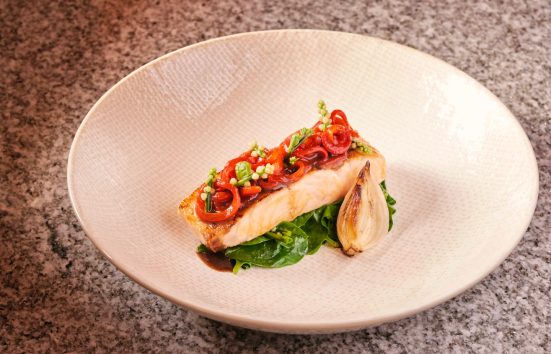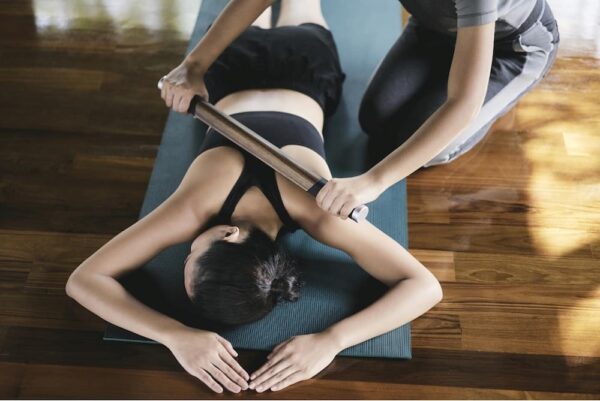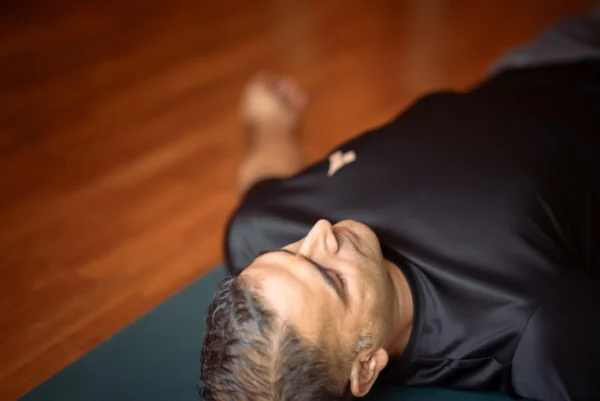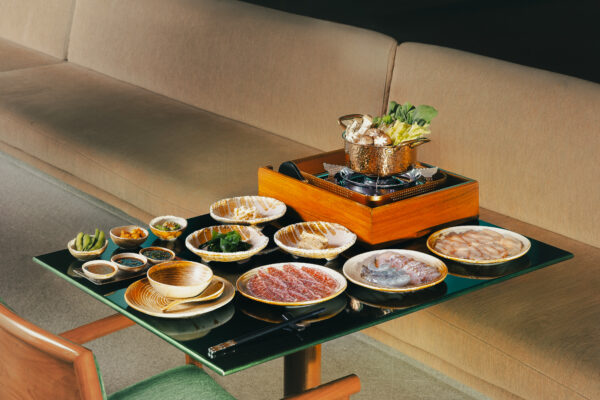Discover the Powerful Health Benefits of Saunas and Cold Plunges
For hundreds of years, Scandinavian cultures famously left the serenity and warmth of their scented wooden saunas only to plunge themselves into cold, and even frozen water in an invigorating, system shock. To outsiders, this seemed like either masochism at its finest, or a sign that the Vikings were truly mad. Now, however, cold plunges and ice baths are all the rage. So, why have they become so popular, and what are the profound and scientifically backed health benefits of this practice?
Whether you’re a seasoned spa lover or someone looking to elevate your wellness routine, exploring the combination of heat and cold therapies could unlock a new path to holistic health. Here’s everything you need to know, supported by science.
Firstly, what are saunas and cold plunges?
- Saunas use dry heat, typically from a wood stove or infrared technology, to increase your body’s temperature. This centuries-old tradition originated in Finland and has long been cherished for its detoxifying and relaxing properties.
- Cold plunges are the practice of immersing yourself in icy cold water, instantly lowering your body temperature. Cold-water therapy is common in Nordic cultures and has gained popularity recently for its restorative and exhilarating benefits.
But the real magic happens when these two elements work in tandem, creating a dynamic, contrast-based therapy that challenges your body and mind. You can find both Infrared and Traditional Saunas and a cold plunge in the Hydrothermal suite at Chiva-Som Hua Hin.
The Health Benefits of Saunas
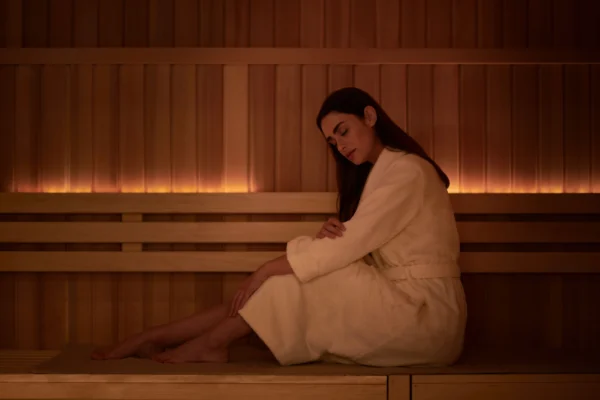
1. Detox and Improved Circulation
Sweating in a sauna helps expel toxins like heavy metals from your body. Increased blood flow during a sauna session also supports oxygen delivery to muscles and organs. Studies reveal that sauna use stimulates the vascular system, promoting improved heart health and reducing blood pressure over time.
Research Highlight: Sauna bathing and the risk of cardiovascular disease and mortality: a prospective cohort study” and was published in JAMA Internal Medicine in 2018.
2. Stress Relief and Mental Clarity
The gentle heat of a sauna has been proven to reduce cortisol, the body’s primary stress hormone. Simultaneously, it helps your body release endorphins, leaving you with a calm and relaxed state of mind.
Science Speaks: The study you mentioned is titled: “Effects of Sauna Bathing on Mood, Stress, and Cardiovascular Health: A Review of the Literature” Published in Evidence-Based Complementary and Alternative Medicine in 2018.
3. Muscle Recovery and Pain Relief
Tired muscles after exercise? A sauna session helps relax tense muscles and alleviate joint pain. The increased heat boosts tissue elasticity and reduces stiffness, making it ideal for recovery routines.
Evidence to Note: “Thermal Therapy in Pain Management: A Review of Clinical Applications” published in The Annals of Medicine (2018).
The Health Benefits of Cold Plunges
1. Reduced Soreness and Faster Recovery
Cold-water immersion helps reduce inflammation, making it a favourite among athletes. The icy water constricts blood vessels and reduces swelling in strained muscles.
2. Boosted Immunity
Cold plunges are believed to activate brown adipose tissue, which is critical for regulating your body’s temperature. In doing so, your body’s immune response becomes more robust, making you less susceptible to common illnesses.
3. Improved Focus and Mood
Studies have found that cold exposure has benefits for mental health. It triggers the release of neurotransmitters such as dopamine and norepinephrine, leaving you feeling more energised, focused, and in balance.
Clinical Evidence: Research published in the PLoS One journal suggests that cold exposure correlates with lower symptoms of depression and anxiety in participants through the stimulation of the sympathetic nervous system. Title: “Effects of Cold Exposure on Mental Health and Sympathetic Nervous System Activation” Journal: PLoS One Year: 2018-2020
4. Metabolism Boost
The shock of cold water can stimulate calorie-burning by activating thermogenesis, where the body works harder to regulate its heat.
Supporting Study: A study in Cell Reports Medicine found that cold immersion can help increase calorie expenditure through metabolic adaptation.
The Magic of Combining Saunas and Cold Plunges
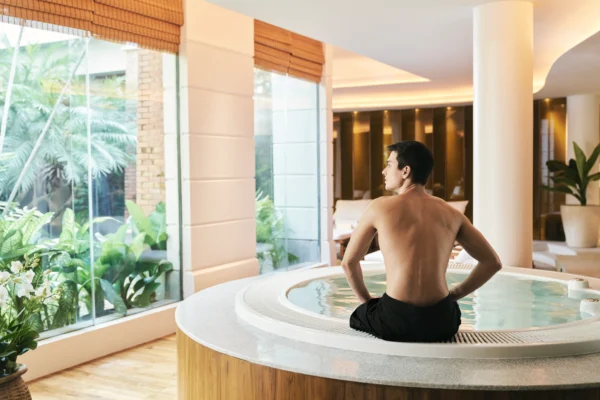
While each therapy offers distinct benefits, alternating between a sauna and a cold plunge creates a unique, complementary effect on the body. Known as contrast therapy, this ritual combines heat-induced relaxation with cold-induced rejuvenation for maximum health benefits.
1. Enhanced Circulation
The alternating temperatures act like a workout for your circulatory system. The heat causes blood vessels to dilate, while the cold causes them to constrict. This process strengthens vascular function over time.
2. Mental Resilience
Transitioning from a sauna’s soothing warmth into icy cold water creates a mental challenge that builds resilience. Over time, frequent practice can empower you to face stressors in life with improved confidence and calm.
3. Optimised Recovery
For athletes and fitness enthusiasts, the sauna-cold plunge sequence can supercharge recovery. The heat reduces muscle tension, and the subsequent cold exposure alleviates inflammation—creating a balanced solution for post-exercise recovery.
How to Incorporate Heath-Enhancing Sauna and Cold Plunge Therapy into Your Routine
- Start Slow: Especially if you’re new to this, begin with shorter durations (5–10 minutes in the sauna and 1–3 minutes in the cold plunge).
- Listen to Your Body: If things feel too intense, take a break.
- Experiment with Frequency: Aim for 2-3 sessions per week and observe how you feel.
- Stay Hydrated: Sweating in the sauna can cause fluid loss, so make sure you replenish your body.
- Seek Guidance: If you’re unsure, consult a wellness professional to guide your sessions.
Conclusion
The combination of sauna and cold plunge therapy offers a wealth of health benefits, from improved cardiovascular health to enhanced mental wellbeing. By integrating these practices into your wellness routine, you can experience a new level of vitality and rejuvenation.
For those interested in exploring these therapies further, Chiva-Som Hua Hin offers a setting to indulge in sauna and cold plunge experiences, providing a haven for relaxation and transformation. To discover more about the benefits and techniques of these therapies, consider exploring additional resources or connecting with wellness experts.
Remember, the key to a successful sauna and cold plunge routine is moderation and mindful listening to your body. By incorporating these practices into your lifestyle, you can unlock a world of health and wellness benefits.
If you want to sample the benefits of Hot and Cold, book one of our immersive retreats at Chiva-Som Hua Hin now.
While sauna and cold plunge therapy offers many benefits, it’s important to consult with your healthcare provider before starting any new wellness routine, especially if you have underlying health conditions such as heart problems, high blood pressure, or pregnancy.
The frequency of use depends on your individual needs and tolerance. Most people find that 2-3 sessions per week are beneficial. However, it’s crucial to listen to your body and adjust accordingly.
Potential risks include dehydration, overheating, and cold-related stress. To minimise these risks, stay hydrated, avoid prolonged exposure to heat or cold, and listen to your body’s signals.
Absolutely! These therapies can complement other wellness practices such as yoga, meditation, and healthy eating. They can also be combined with other spa treatments for a truly luxurious and rejuvenating experience.
Start slowly and gradually increase the duration and intensity of your sessions. Listen to your body and adjust accordingly. If you experience any discomfort or adverse effects, stop immediately and consult with a healthcare professional.



